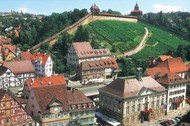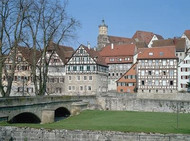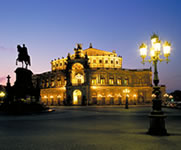
The "Hohenstaufen Route" is a well signposted, easy-to-follow tourist route through some of the loveliest countryside in Baden-Württemberg, the heartland of the Hohenstaufen dynasty. 340km in length, the route guides visitors to the cradle of this foremost family in German and European history. It takes in virtually all the places most closely associated with the history, art and politics of the ancestral home of the Hohenstaufens. The Hohenstaufen dynasty, originally an aristocratic family from Swabia, determined the course of German - and subsequently European - history between the 11th and the 13th centuries. They were a dynasty of dukes, kings and emperors who at times ruled over half of Europe.

There are 27 towns along the route with romantic churches, abbeys, strange caves and formidable castles that were once home to the Hohenstaufens. At every turn there are reminders of a turbulent past: times when the region was still the very heart of power in the Holy Roman Empire of the German Nation. The legacy of the Hohenstaufens is the legacy of a prominent dynasty which shaped the medieval world more than perhaps any other ruling family. The Hohenstaufen dynasty came to prominence in 1067 when Frederick von Staufer, who accompanied Henry IV, the Holy Roman Emperor, on his march to Canossa, was raised to the nobility. The lands under the family's control were substantially increased by Frederick I, the Hohenstaufen emperor known as Barbarossa, who drowned in 1190 in mysterious circumstances during the Third Crusade. His successors expanded the Holy Roman Empire even further. However, when Conradin, then just 15 years old, was beheaded in 1268 after travelling to Italy to stake his claim on the Hohenstaufen inheritance, the family disappeared once more from the medieval world stage.
 Skip to content
Skip to navigation
Skip to subnavigation
Skip to search
Skip to content
Skip to navigation
Skip to subnavigation
Skip to search







